Islenzk Spil
This historical Icelandic deck was first published in c.1930 and shows the native Icelandic Vikings of some thousand years ago rendered in a romantic naturalistic style.
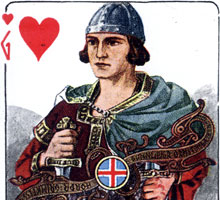
‘Islenzk Spil’ ~ Historical Icelandic Playing Cards
Icelandic culture is founded upon the nation's Norse heritage. Most Icelanders are descendants of Norse and Gaelic settlers. This historical Icelandic deck was first published in c.1930 and shows the native Icelandic Vikings of some thousand years ago with stern expressions but rendered in a romantic naturalistic style. Their names are given in Icelandic lettering in the ornament separating each end of the design, which also includes Viking motifs.
Tryggvi Magnússon (1900-1960) graduated from secondary school in Akureyri in 1919 and then pursued studies in Copenhagen for two years. Then he went to New York League of Art 1921-1922 and studied portrait making. Between 1922-1923 he pursued the study of painting in Dresden. Tryggvi was one of the founders of the Association of Icelandic Graphic Designers and he also designed Icelandic Chess Playing Cards printed by Alf Cooke in 1942.

Above: ‘Islenzk Spil’ ~ Historical Icelandic Playing Cards with double-ended illustrations designed by Tryggvi Magnússon (1900-1960) and first published in 1930. 52 cards + Joker + Bridge Score cards in cardboard box. There have been several editions of the deck and this one is probably c.1940 after Magnus Kjaran, whose name appears on the box, had bought the rights. The indices on the numeral cards are not consistent with those on the court cards. More recent editions of this deck have a yellow background. The Joker depicts Hreiðarr Heimski, Hreidarr the Fool, a character from Icelandic literature.
• See also: Icelandic Chess Playing Cards (also designed by Tryggvi Magnússon).
By Simon Wintle
Spain • Member since February 01, 1996 • Contact
I am the founder of The World of Playing Cards (est. 1996), a website dedicated to the history, artistry and cultural significance of playing cards and tarot. Over the years I have researched various areas of the subject, acquired and traded collections and contributed as a committee member of the IPCS and graphics editor of The Playing-Card journal. Having lived in Chile, England, Wales, and now Spain, these experiences have shaped my work and passion for playing cards. Amongst my achievements is producing a limited-edition replica of a 17th-century English pack using woodblocks and stencils—a labour of love. Today, the World of Playing Cards is a global collaborative project, with my son Adam serving as the technical driving force behind its development. His innovative efforts have helped shape the site into the thriving hub it is today. You are warmly invited to become a contributor and share your enthusiasm.

Leave a Reply
Your Name
Just nowRelated Articles
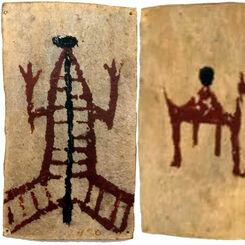
Aónikenk playing cards
Ethnographic playing cards made by members of the Aónikenk culture from Patagonia.
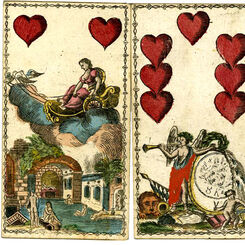
Heathen Wars
German-suited ‘Heathen War’ playing cards published by Joseph Fetscher, Munich, c.1820.
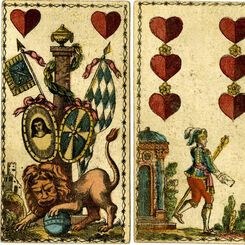
Historical playing cards by Joseph Fetscher
Historical playing cards by Joseph Fetscher, Munich, c.1820.
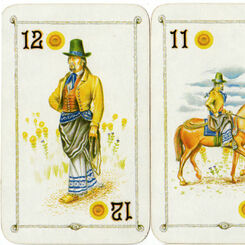
Naipes Cardón
Naipes Cardón designed by Mario Luis Rivero depicting traditional Argentine culture and identity, 20...
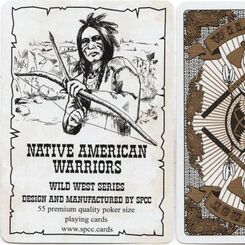
Native American Warriors
Native American Warriors from the Wild West Series published by SPCC, 2018.

Reshuffle
“Reshuffle” by Reetta Hiltunen, Finland, is a playing card installation stemming from the traditiona...

Naipes Argentinos Patagonia
“Naipes Argentinos Patagonia” with court cards depicting gauchos and native Indians, c.2000.
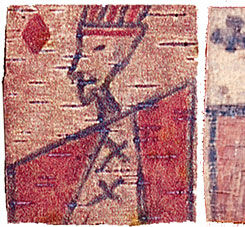
Ojibwa Native Indian Cards
Ojibwa Native Indian playing cards hand manufactured on birch bark in imitation of standard French /...

Iceland Mythological Playing Cards
Iceland Mythological Playing Cards designed by Sigurlinna Pétursson, 1958
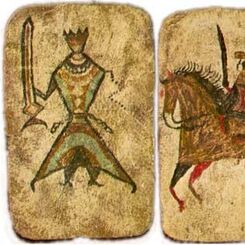
Apache Playing Cards
Apache Indian Playing Cards made on rawhide, first recorded 1875.

Mongolian Playing Cards
Mongolian Playing Cards.
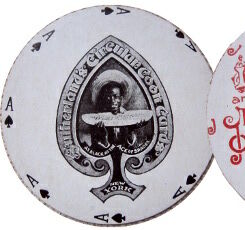
Circular Coon Cards
Circular playing cards in a round tin titled: Sutherland's Circular Coon Cards published by Hartley ...
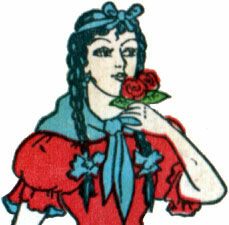
Naipes Casino Estilo Argentino
Naipes Casino Estilo Argentino by Justo Rodero with Gaucho suit symbols: the mate gourd, the sun, "f...
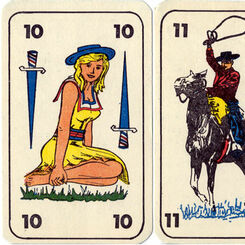
Naipes Condor
"Naipes Condor" Chilean playing cards, with Chilean symbolism on the suit signs.

Estonian Historic Playing Cards
The court cards and indices on Estonian playing cards are Södur, Emand, Kuninga.

Gaucho Playing Cards
Florencio de los Ángeles Molina Campos (1891-1959) produced the artwork for his series of Gaucho pla...
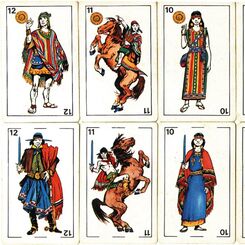
Baraja Aparcero
Designed to illustrate the history of four indigenous tribes who represent the roots of the Argentin...
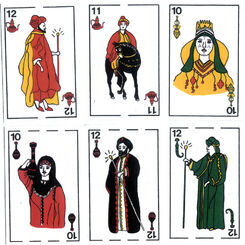
Moroccan Bank of Commerce and Industry
Advertising pack for the Moroccan Bank of Commerce and Industry, 1986.
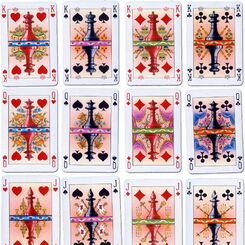
Icelandic Chess playing cards
Innovative "Icelandic Chess" pack, designed by Tryggvi Magnússon and manufactured by Alf Cooke Ltd (...
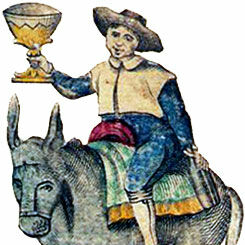
Escalada y Vidiella, Montevideo c.1860
Cards from a 40-card pack made in Belgium by Antoine van Genechten exclusively for the firm "Escalad...
Most Popular
Our top articles from the past 60 days


 Your comment here. Your comment here. Your comment here. Your comment here. Your comment here. Your comment here. Your comment here. Your comment here. Your comment here. Your comment here. Your comment here. Your comment here. Your comment here. Your comment here. Your comment here. Your comment here. Your comment here. Your comment here. Your comment here. Your comment here. Your comment here. Your comment here. Your comment here. Your comment here. Your comment here. Your comment here. Your comment here. Your comment here. Your comment here. Your comment here. Your comment here. Your comment here.
Your comment here. Your comment here. Your comment here. Your comment here. Your comment here. Your comment here. Your comment here. Your comment here. Your comment here. Your comment here. Your comment here. Your comment here. Your comment here. Your comment here. Your comment here. Your comment here. Your comment here. Your comment here. Your comment here. Your comment here. Your comment here. Your comment here. Your comment here. Your comment here. Your comment here. Your comment here. Your comment here. Your comment here. Your comment here. Your comment here. Your comment here. Your comment here.




















